Nakhchivan: The enigmatic land of Azerbaijan
Another day, another exclave. This time, I am in the southern part of the Caucasus, in the Azerbaijani exclave Nakhchivan (spelled Naxcivan in Azerbaijani). This autonomous republic is surrounded by Armenia in the north and east, by Türkiye in the west and by Iran in the southwest.
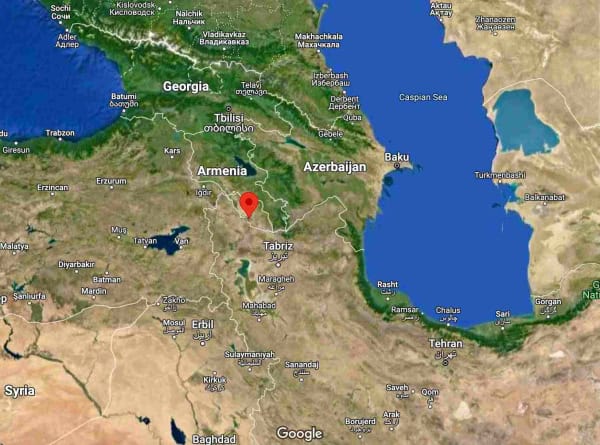
For a while in the 1920s, it was the Nakhichevan Autonomous Soviet Socialist Republic (Nakhchivan ASSR) within the Azerbaijan SSR – before it became a part of Azerbaijan proper in 1924.
It is not on any beaten path, Nakhchivan, and if you have never heard of it, you are not alone. Even back in Soviet times, it was an isolated outpost. Interestingly, it was one of the first regions to declare independence from the Soviet Union, already in January 1990.
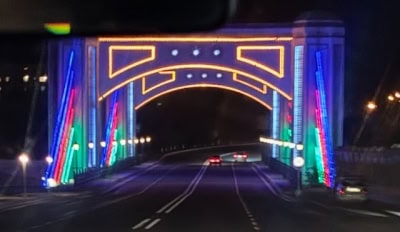
Quiet night-time roads in Nakhchivan
Arriving in Nakhchivan
I arrive in Nakhchivan just before midnight on the last day of April. Getting a taxi from the airport to the hotel is a breeze.
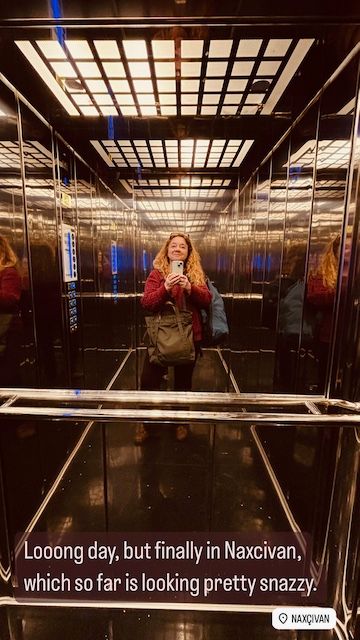
I am only here for about three-quarters of a day and want to see as much as possible. Also, I have not planned, well, anything. I know it sounds like a contradiction, leaving it all to chance like that. It can be a bit risky, but most of the time it turns out just fine. So I ask the friendly young guys at the hotel reception to arrange a driver/guide for me for the next day. No one speaks any language I know, but nothing a talking translator app can’t handle. The two of them get to working the phones, even at that late hour.
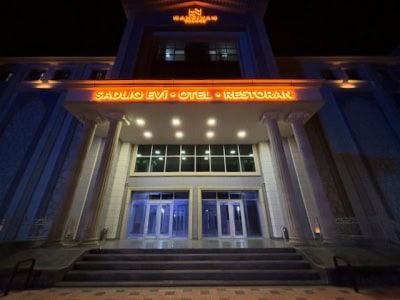

Naxcivan Palace, by night and by day
And sure enough, the next morning, bright and early, I meet my guide/driver. Guide in the sense that he knows where to drive me, and what to show me – but he does not speak a word of any language I know, either. No matter. It all works out. As usual.
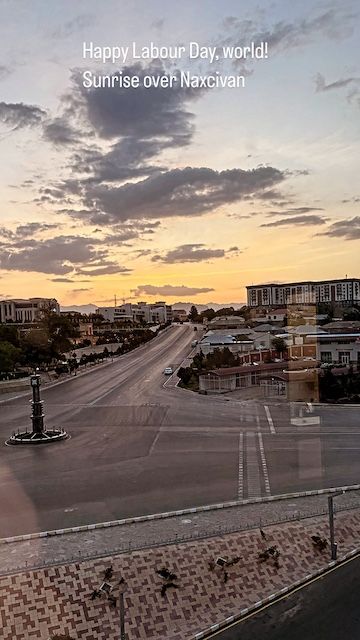
1. Hazrat-e-Zahra mosque
The first stop is this 16th century mosque.
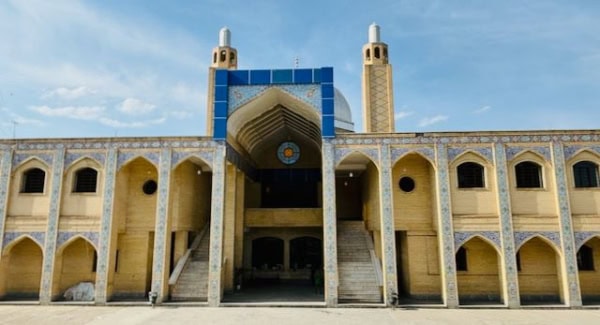
What strikes me the most inside this mosque, is this…

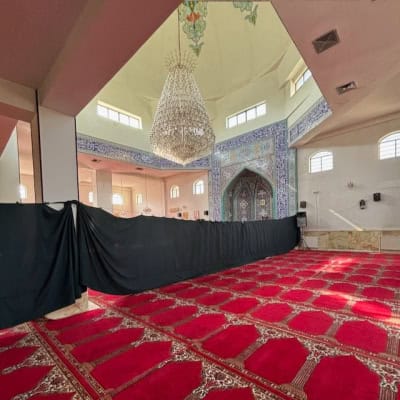
left photo: the rather plain women’s section, right photo: sneaking a peek across at the men’s not-so-plain section.
Even though I cannot see the men’s section properly, mere female that I am, I see enough to notice the huge difference across that black divide.
2. Juma Mosque
Next up is Juma Mosque, the Friday Mosque, with lovely domes, minarets, and intricate tile work, all quite artistic.
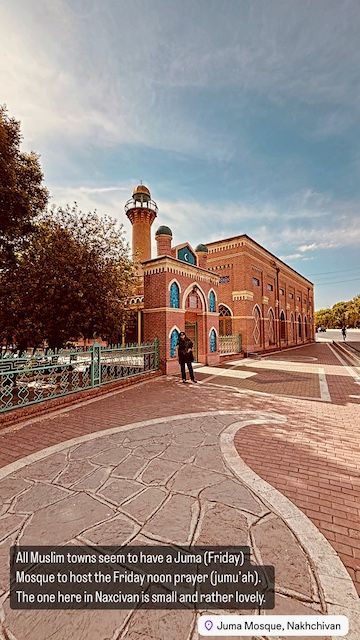
It is a pretty building, set in a tranquil garden.

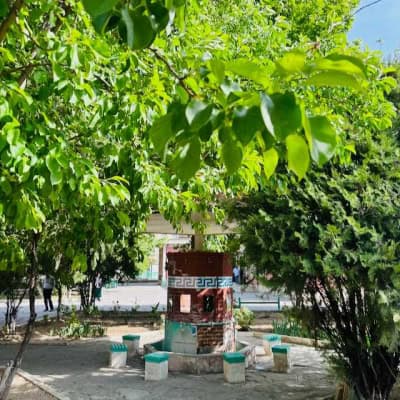
The Juma mosque was demolished in the early 20th century and rebuilt in modern times – so I’m curious… what will meet me inside?
Better, but still a bit of a difference.
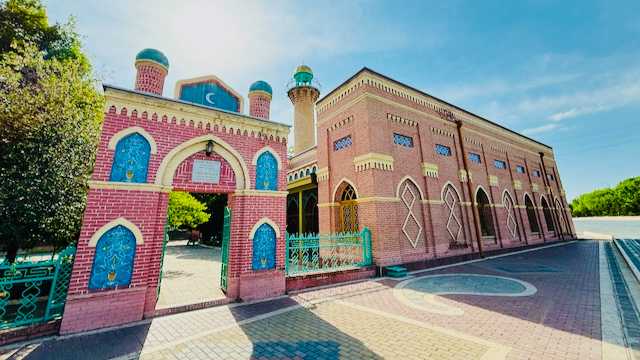
3. The market
Across the street from Juma Mosque, next to the river –
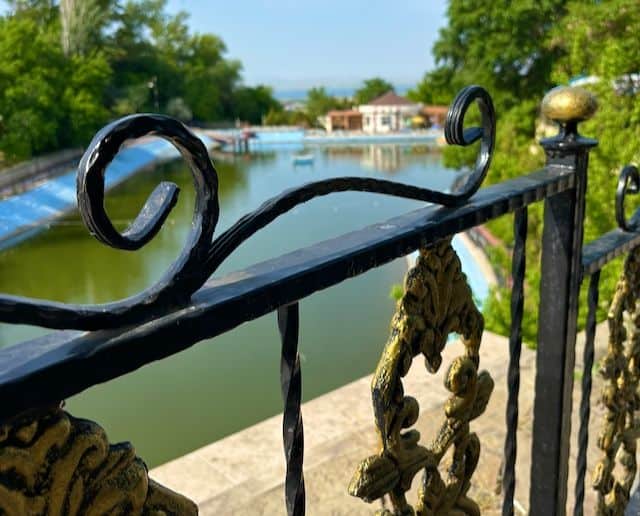
– is a lively little market, with friendly vendors and fresh produce, spices, clothes, washing detergent… you name it.
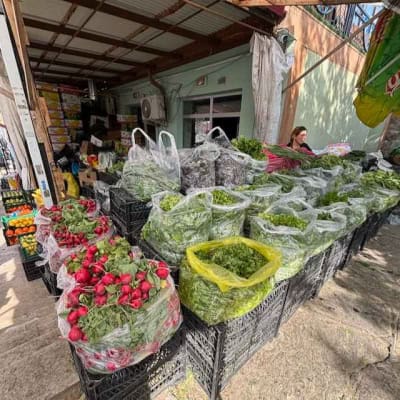
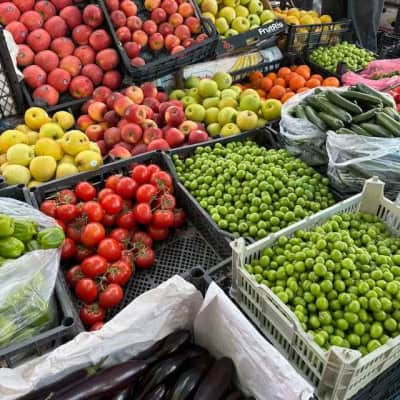
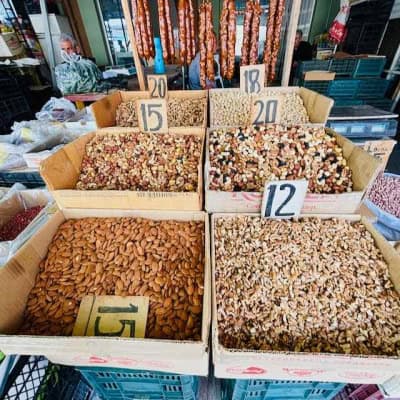

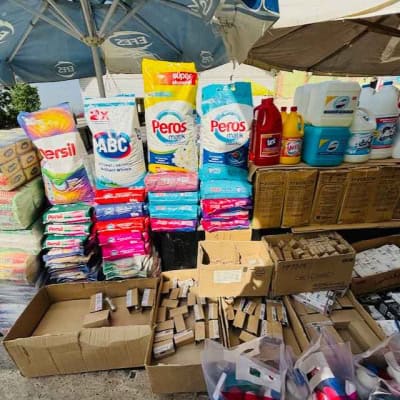
Me, I’m oddly intrigued by these heads.

A few steps down and along the river, is a cafe that looks quite cosy on this lovely May day.
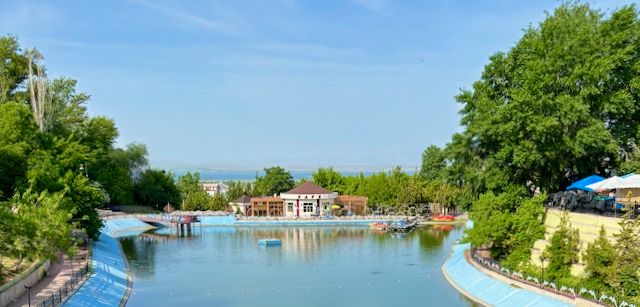
4. Momine Khatun
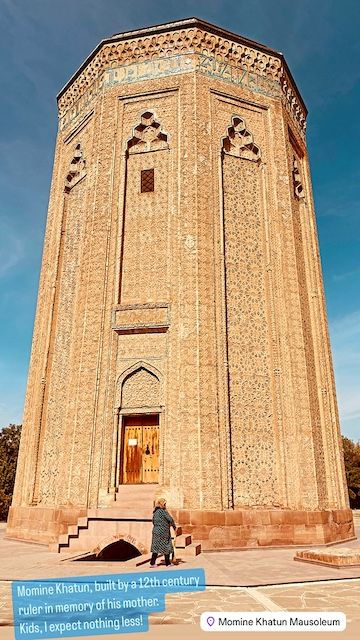
The striking 900-year-old structure was built by order of local ruler Atabek Jahan Pahlawan in honour of Momine Khatun. Some sources say she was his wife, others say it was his mother. Either way, he must have missed her, like Shah Jahan missed Mumtaz Mahal.
The once 34-metre high mausoleum (only 25 metres of which have been preserved), is decorated with intricate geometric patterns and writing in Kufic script from the Quran. Islamic architecture in the 12th century was pretty advanced for its time.
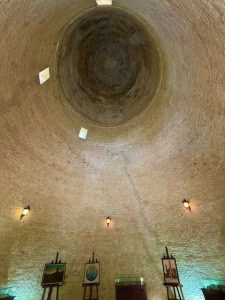
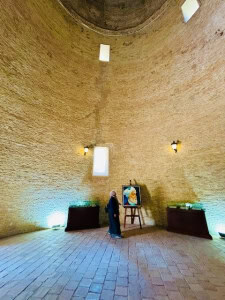
Inside the Momine Khatum Mausoleum are art exhibits
5. Palace of Nakhchivan Khans
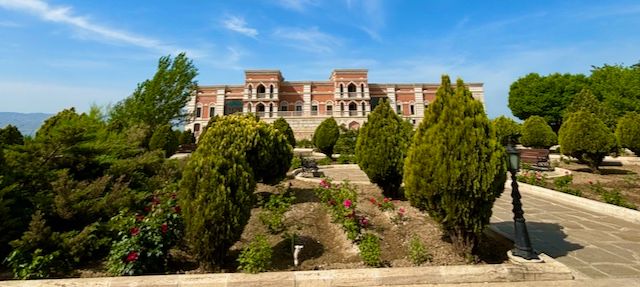
Next to the Momine Khatun mausoleum, is the Khan’s Palace, yet another elegant work of architecture, although much newer. The gardens are beautifully landscaped, too. This grand palace served as the residence of the ruling khans from the 1700s until the khanate was abolished in the early 20th century. Not afraid to show off their wealth, those khans.

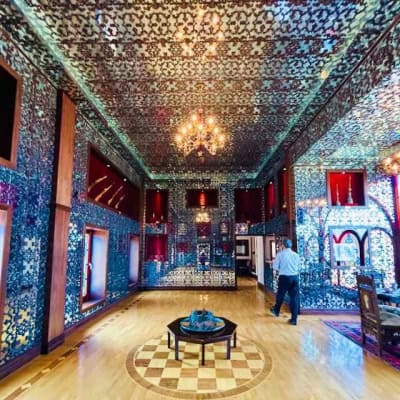

My favourite is the mirror room.
6. Yezidabad Castle
Yezidabad Castle is a reconstructed Sassanid castle and one of the main attractions in Nakhchivan. That said, on this sunny day, I – and my trusty driver/guide – are the only ones here.
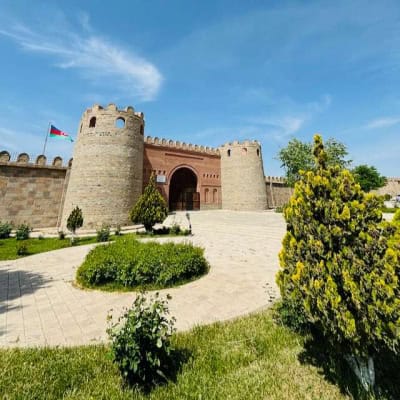
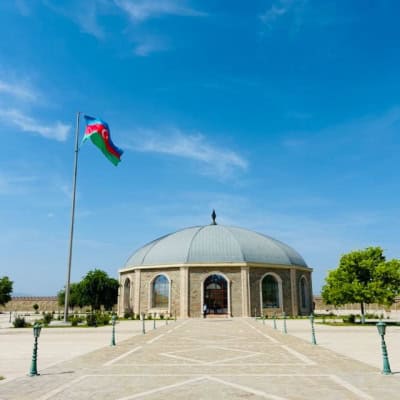
Within the grounds, there’s a spacious garden and a museum –

The castle museum: that ceiling!
– and around the garden is a long wall you can walk on, for good views of the compound. What you will see, is a large mosque and a more modest, but pretty little structure with a pointed roof. Across the river, you can see Iran.
7. The Heydar Mosque
Nothing modest about the mosque. It is named after the former president of Azerbaijan, Heydar Aliyev, and is evidence that even contemporary Islamic architecture is top notch.
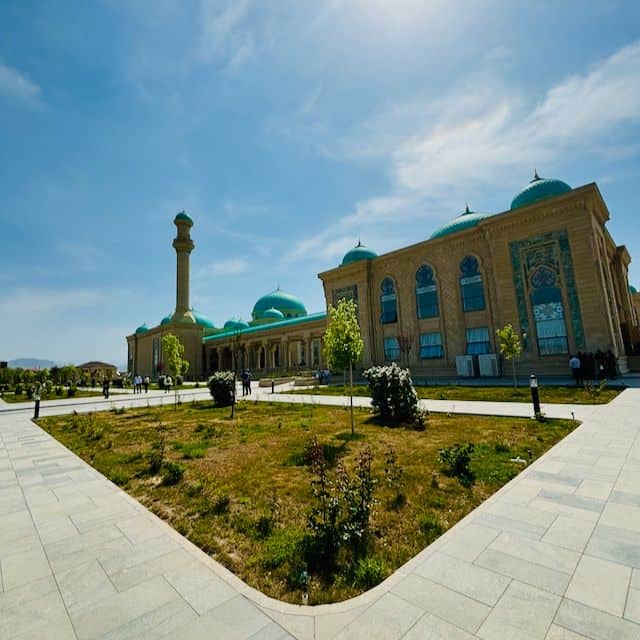
The sleek Heydar Aliyev Mosque in Nakhchivan City.
What I especially like about this mosque, is that the women’s section is as elaborate as the men’s.
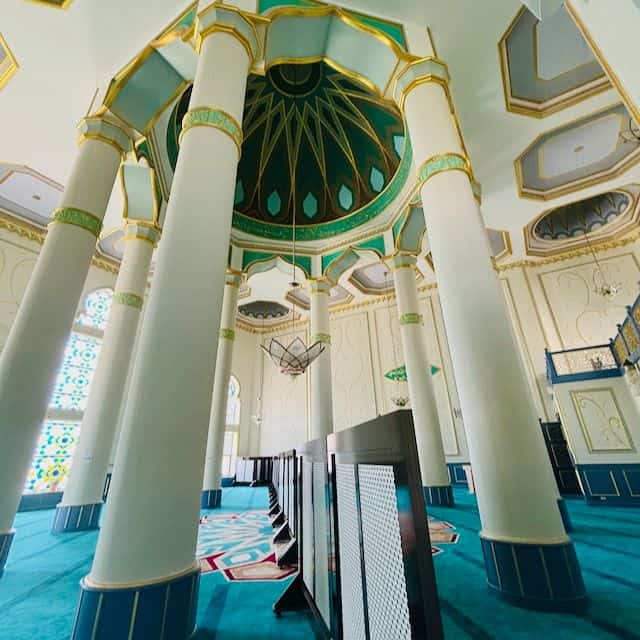
A step in the right direction
It is, in fact, one single room, separated by a moveable wall. Practical. And fair.
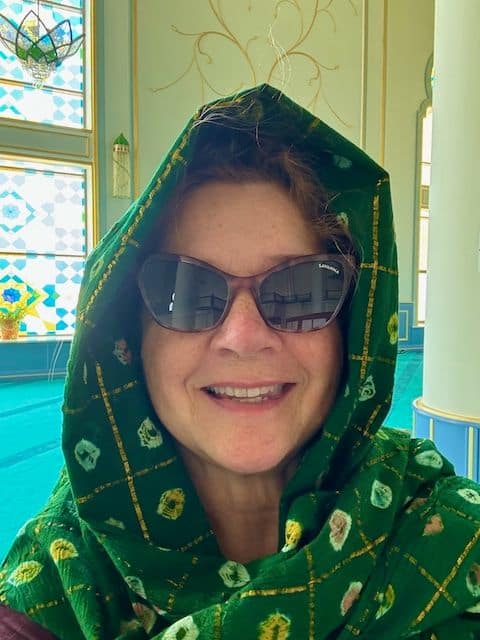
Pleased
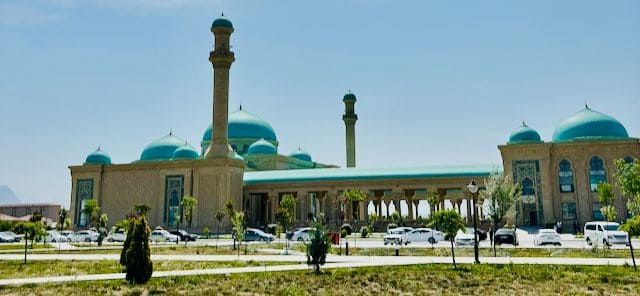
8. Noah’s mausoleum
If you are interested in religious history, this octagonal building is for you.

Probably the most famous of all of Nakhchivan’s sights, is yet another tomb, that of old man Noah – the one with the ark, remember? This, legend has it, is where he settled with his family and the remaining few animals on earth that had not been brutally killed by the god of all the books of the monotheistic religions: the Torah, the Bible, the Quran. In fact, the story is even mentioned in Baha’i writings. Needless to say, this mausoleum draws pilgrims from all round. Best not to tell them that at least five other places claim to house Noah’s grave, too.
The mausoleum was built in 2006 and consists of the lower floor of what used to be a temple. Inside the mausoleum is a room with photos and various artefacts, as well as this glass dome in the middle of the floor. Underneath is a burial chamber, where Noah’s relics are said to be.
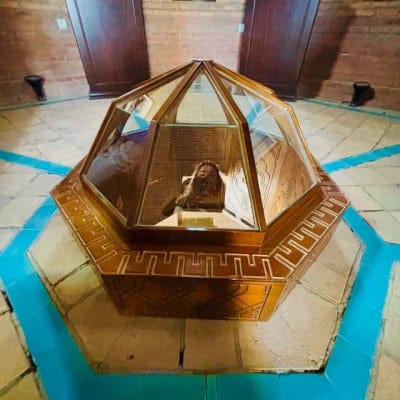
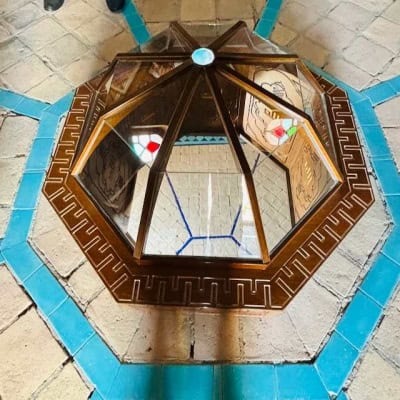
Are Noah’s bones underneath here? Or anyone’s bones, really?
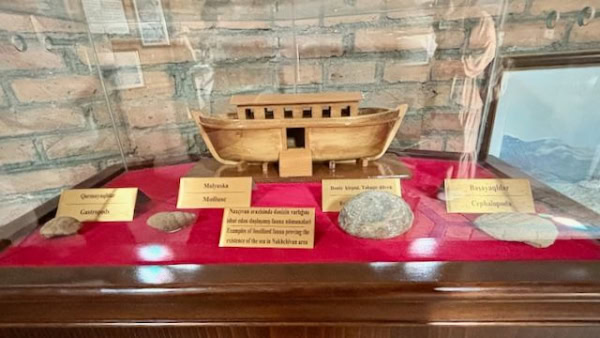
An ark! We must display an ark!
A little Nakhchivan history
Human settlements in Nakhchivan can be traced back to the Neolithic era, which means this is one of the oldest inhabited regions in the world. It has been an important crossroads of civilisations. The Persians has been here, the Armenians, and the Seljuk Turks. Some say the name Nakhchivan means place of descent, referring to where Noah & Co descended down the mountain after the great flood.
Nakhchivan practicals
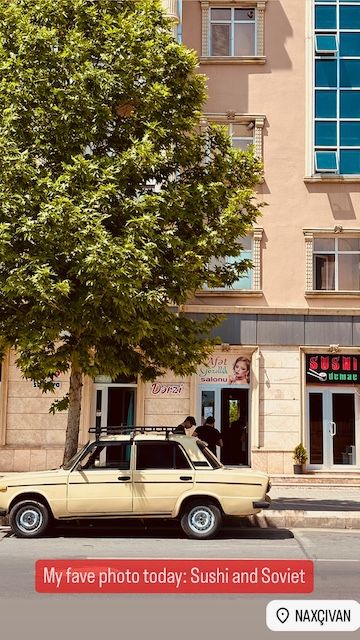
Nakhchivan street scene
-
- The only way in is from Baku, with AZAL – Azerbaijan Airlines. The flight takes about 1 hour and has a fixed price: as of May 2024, it is AZN 60 for Azerbaijani citizens and AZN 70 (EUR 38/USD 41) for others. I booked directly through the AZAL website, but you can also buy the ticket directly at the regional terminal at Baku airport (provided there are seats available, of course.)
- I found my lodgings through a hotel booking engine, in the usual way. Not many options, though.
- Getting around with a rental car should be easy; traffic did not seem to be particularly challenging.
- Bring cash – Azerbaijani Manat
With such a short time in this exclave, I focussed on Nakhchivan City. I am going to encourage you to do what I say, not what I did here: i.e. plan a longer stay in such an unusual place. I would recommend at least 2 full days, 3 is better. There is much to see outside the city, including
- The medieval Alinja Fortress, known as the Machu Picchu of Nakhchivan, a citadel on top of a crag in the Julfa mountains. Climb 1,500 steps to the top. Some say 1,800. Better check it out for yourself. Views should be awesome.
- Lake Batabat, a mountain lake at 2,500 metres above sea level – with floating peat islands
- More mausoleums, e.g. Qarabagh Mausoleum, 40 km away from Nakhchivan City
- Hiking at Mount Ilandag, ‘Snake Mountain’, with several species of vultures and panoramic views of much of Nakhchivan. Also, legend has it, this is where Noah’s Ark landed after the great flood. Mount Ararat is getting some competition there.
- Duzdagh health centre, in one of the world’s oldest salt mines. It is said, the unique microclimate here benefits respiratory health.
- Ordubad, an ancient village on the border with Iran

What else?
- Nakhchivan is surrounded by the Zangezur Mountains and the Aras River, and is a find for outdoor enthusiasts: hiking, fishing, picnicking…
- tasting the food: I am not really a foodie, but I am betting many of you are. Nakhchivan’s cuisine fuses Azerbaijani and regional flavours, and local dishes include govurma (a meat stew), ash (a soup), lavash (traditional flatbread), and sweet treats like pakhlava (baklava) and gogal (pastry).
- experiencing traditional music and folk dancing, perhaps at one of the many festivals taking place throughout the year. Local instruments are the tar (a lute) and the balaban (a woodwind instrument). Dances are lively and colourful.
I will just have to come back.
Nakhchivan: The enigmatic land of Azerbaijan is a post from Sophie's World

